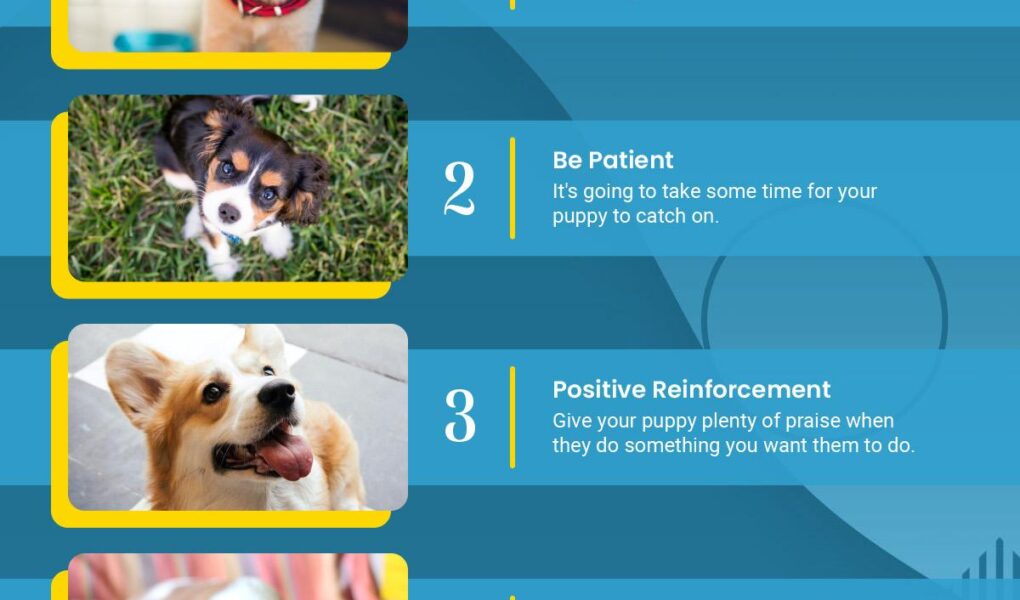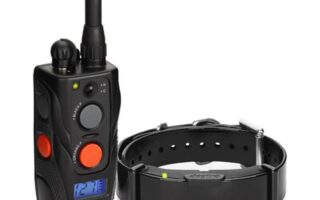Unlocking Potential: The Benefits of Puppy Board and Train Programs
Welcoming a new puppy into your home is akin to opening the door to a whirlwind of joy, curiosity, and the occasional chaos. As these playful companions explore their new world, they often leave you wondering how to mold their boundless energy into good behavior. Enter the concept of “puppy board and train”—a unique training solution that not only addresses behavioral challenges but also lays the foundation for a well-mannered canine companion. Combining professional guidance with structured learning, puppy board and train programs offer an immersive experience tailored to transform raw potential into polished skills. In this article, we delve into the ins and outs of these programs, exploring their benefits, methodologies, and what you can expect while your furry friend embarks on this transformative journey.
Table of Contents
- Understanding the Concept of Puppy Board and Train Programs
- Key Benefits of Choosing a Board and Train for Your Puppy
- Selecting the Right Facility: What to Look For
- Maximizing Success: Continuing Training at Home After Board and Train
- Q&A
- Wrapping Up
Understanding the Concept of Puppy Board and Train Programs
Puppy board and train programs offer a unique approach for pet owners seeking effective training solutions for their furry companions. In these programs, puppies are taken to specialized facilities where trained professionals work closely with them over a set period. This immersive learning experience aims to build strong foundations in various aspects, including obedience, socialization, and behavior modification. By being in a structured environment, puppies are less distracted and able to focus on their training, allowing for accelerated learning.
Typically, these programs cover a range of essential skills that benefit both the puppy and their owner. Key components often include:
- Basic obedience commands: Sit, stay, come, heel, and more.
- Socialization techniques: Exposure to different people, animals, and environments.
- Behavior management: Addressing common issues such as chewing and barking.
- Potty training assistance: Helping puppies learn where and when to relieve themselves.
Each program can vary in length and intensity, but the results are often profound, yielding well-adjusted and obedient dogs. By the time the puppy returns home, both pet and owner will have more tools and techniques at their disposal, fostering a harmonious living environment.
Key Benefits of Choosing a Board and Train for Your Puppy
Choosing a board and train program for your puppy can lead to a host of advantages that benefit both you and your furry friend. One of the primary benefits is the opportunity for intensive training in a structured environment. Puppies develop essential skills more rapidly when they are immersed in a training program that is focused and consistent. This setup often provides round-the-clock supervision and guidance from experienced trainers, which helps address behavioral issues effectively and fosters a strong foundation for good manners and obedience.
Another significant benefit is the socialization opportunities that come with board and train programs. Your puppy will interact with other dogs and people in a safe setting, which is crucial during their formative stages. These interactions can help to reduce fears and anxiety around unfamiliar situations. Additionally, post-training follow-ups and guidance empower owners to continue fostering the skills learned during the program, ensuring long-lasting results and a harmonious relationship between you and your puppy.
Selecting the Right Facility: What to Look For
When choosing a facility for your puppy’s board and train program, it’s essential to prioritize the environment where your furry friend will be spending their time. Look for a facility that offers a clean, safe, and stimulating atmosphere. A few key aspects to consider include:
- Supervision: Ensure that staff-to-dog ratios are kept low to provide ample supervision and individual attention.
- Space: Ample indoor and outdoor areas for play and training are vital for your puppy’s physical and mental well-being.
- Cage-Free Options: Facilities that provide lodging without cages can contribute to a more relaxed experience for your pet.
- Training Philosophy: Understand the training methods used, looking for positive reinforcement techniques that promote a healthy bond between your dog and their trainer.
Furthermore, you should also investigate the credentials and experience of the trainers who will be working with your puppy. An assessment of their qualifications can offer peace of mind, knowing your dog is in capable hands. Consider the following as you weigh your options:
- Certifications: Look for trainers with recognized certifications or memberships in professional dog training organizations.
- Experience: Seek facilities with trainers who have experience working with specific breeds or behavioral challenges.
- References: Request testimonials or reviews from previous clients to gain insight into the facility’s reputation.
Maximizing Success: Continuing Training at Home After Board and Train
After your puppy’s board and train experience, it’s crucial to continue reinforcing their newly acquired skills at home. This phase not only solidifies their training but also helps in building a stronger bond between you and your furry friend. To maximize the benefits, consider establishing a consistent routine that incorporates training sessions into your daily activities. Here are some effective strategies to maintain that momentum:
- Short Training Sessions: Keep training sessions brief and engaging, ideally lasting between 5 to 10 minutes.
- Daily Practice: Dedicate time each day to practice commands learned during the board and train program.
- Positive Reinforcement: Use treats and praise to motivate your puppy and reinforce good behavior.
- Real-World Application: Practice commands in various settings to increase your puppy’s adaptability and response.
To track your progress and ensure you’re hitting all the necessary milestones, consider creating a simple training schedule. This can help you stay organized and focused on your training goals. Below is a quick reference table you can adapt:
| Day | Activity | Duration |
|---|---|---|
| Monday | Recall Practice | 10 mins |
| Wednesday | Sit/Stay Exercises | 5 mins |
| Friday | Leash Walking Drills | 10 mins |
With a thoughtful approach and a commitment to daily training, you can ensure that your puppy retains the skills learned during their board and train, paving the way for a well-behaved and happy companion.
Q&A
Q&A on Puppy Board and Train: Your Comprehensive Guide
Q: What is puppy board and train?
A: Puppy board and train is a specialized program where puppies stay at a dedicated training facility with professional trainers. This immersive experience is designed to accelerate learning and address behavioral issues in a structured environment. Puppies typically spend a week or more working on basic commands, socialization, and good manners.
Q: What are the benefits of choosing a board and train program for my puppy?
A: There are several benefits to enrolling your puppy in a board and train program. First, professional trainers can provide consistent, expert guidance that you might not have time to implement at home. Additionally, the focused environment minimizes distractions, allowing your puppy to learn more quickly and effectively. your puppy will benefit from socializing with other dogs and people, enhancing their adaptability.
Q: How do I choose a reputable board and train facility?
A: When selecting a facility, look for recommendations from veterinarians, fellow dog owners, or reputable breeders. Visit the facility to observe the training methods, staff interactions with dogs, and overall cleanliness. Ensure the trainers use positive reinforcement techniques and tailor their approach to your puppy’s specific needs.
Q: What should I expect during the board and train process?
A: The training process typically involves daily sessions focusing on basic commands, leash manners, and socialization. You’ll receive regular updates on your puppy’s progress, along with training techniques to practice at home. Expect a detailed transition plan to help maintain your pup’s learning once they return home.
Q: Is board and train suitable for all puppies?
A: While board and train can be beneficial for many puppies, it’s important to consider your pup’s age, temperament, and specific needs. Younger puppies might benefit from shorter programs, while those with behavioral challenges may require more intensive training. Consult with a trainer to determine if it’s the right fit.
Q: How long should my puppy stay in a board and train program?
A: The length of stay varies depending on factors such as your puppy’s age, training goals, and facility offerings. Programs often range from one week to several weeks. Discuss your expectations with the trainer to find a duration that aligns with your goals.
Q: Will I still be involved in my puppy’s training?
A: Absolutely! A quality board and train program encourages ongoing communication between trainers and owners. You’ll learn techniques to reinforce the training at home, ensuring consistency and building a stronger bond with your puppy once they return.
Q: Can I expect my puppy to be fully trained after the board and train program?
A: While board and train programs can provide a solid foundation of training, consistency is key. Your puppy may return well-trained but will need continued reinforcement and practice at home to maintain and build upon their skills. Think of it as a springboard for future learning!
Q: What should I pack for my puppy’s stay?
A: Check with the facility for their specific requirements, but generally, bring your puppy’s food, treats, a leash, and any favorite toys or blankets to help them feel comfortable. Ensure everything is clearly labeled to prevent mix-ups.
Q: What if my puppy has special needs or a unique personality?
A: Most reputable facilities will accommodate puppies with special needs or unique temperaments. It’s important to communicate any concerns or specific requirements to the trainers ahead of time so they can develop an individualized approach to your puppy’s training.
By understanding the nuances of puppy board and train programs, you can make informed decisions that lead to a well-trained, happy canine companion. Happy training!
Wrapping Up
a puppy board and train program can serve as an invaluable resource for both dogs and their owners. By immersing your furry friend in a structured environment, you create an opportunity for them to learn essential skills, socialize with other dogs, and foster good habits that will benefit their overall behavior. However, as you consider this option, remember that each puppy is unique, and what works for one may not be the best fit for another. Take the time to research facilities, inquire about training methodologies, and reflect on your own training goals. In doing so, you can ensure that the journey you embark on together not only strengthens your bond but also lays the foundation for a lifetime of companionship and joy. Your pup’s adventure is just beginning, and with the right training, you can look forward to many wonderful moments ahead.



